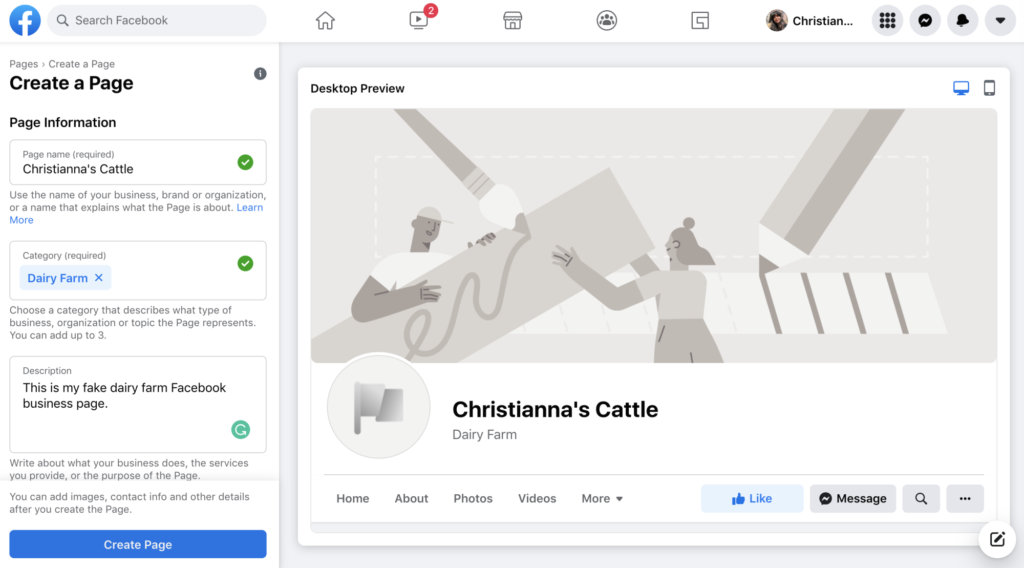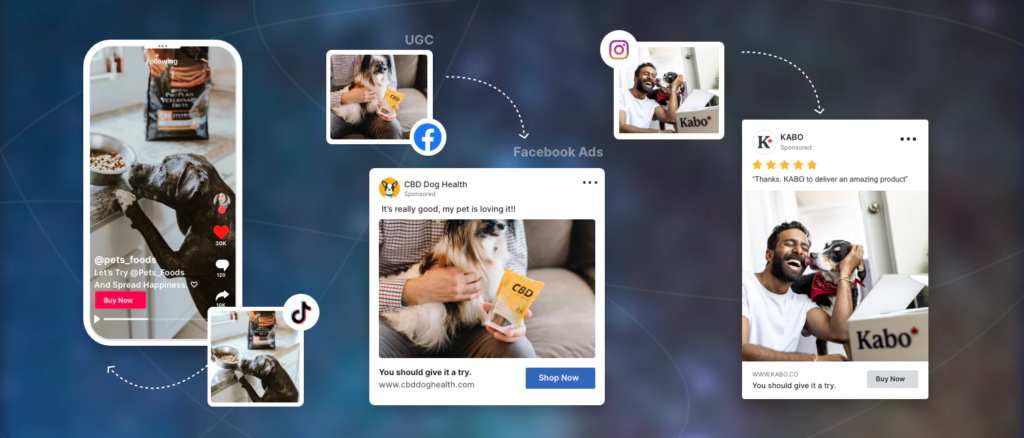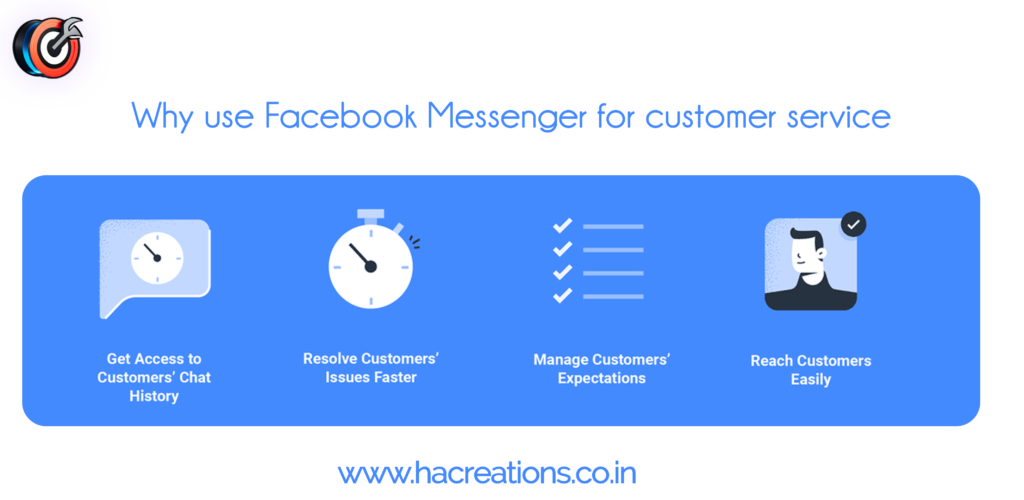
- Introduction
- Brief overview of the significance of Facebook as a marketing tool.
- Creating a Business Page
- Importance of having a dedicated business page on Facebook.
- Steps to create an engaging business profile.
- Leveraging Facebook Ads
- Understanding the power of Facebook advertising.
- Tips for creating effective and targeted ads.
- Engaging Content Creation
- Importance of quality content in attracting and retaining an audience.
- Strategies for creating engaging posts.
- Building a Community Through Groups
- Exploring the benefits of creating or joining Facebook groups.
- Tips for managing and growing a community.
- Utilizing Messenger for Customer Interaction
- The role of Facebook Messenger in customer communication.
- Best practices for using Messenger as a marketing tool.
- Cross-Promotion with Other Platforms
- Integrating Facebook with other social media platforms.
- Maximizing reach through cross-promotion.
- Ensuring Consistency Across Platforms
- Importance of a consistent brand image across different platforms.
- Strategies for maintaining consistency.
- Addressing Negative Feedback
- Dealing with negative comments and reviews on Facebook.
- Turning challenges into opportunities.
- Staying Updated with Facebook Algorithm Changes
- The dynamic nature of Facebook algorithms.
- Tips for staying informed and adapting to changes.
- Measuring Return on Investment (ROI)
- Establishing goals and metrics for measuring ROI on Facebook.
- Evaluating the success of marketing efforts.
- Conclusion
- Summarizing key points.
- Encouraging readers to implement the discussed strategies.
Facebook has evolved from being a mere social networking site to a powerful marketing tool for businesses. In this article, we’ll explore 5 effective ways to leverage Facebook’s potential for marketing purposes.
1. Creating a Business Page

Setting up a dedicated business page on Facebook is the first step in establishing a strong online presence. A well-crafted business profile not only lends credibility but also provides a platform for direct interaction with the target audience.
2. Leveraging Facebook Ads

Facebook’s advertising platform is a goldmine for marketers. With precise targeting options, businesses can reach their ideal audience. Crafting compelling ad copies and visuals is key to grabbing users’ attention and driving conversions.
3. Engaging Content Creation
In the world of social media, content is king. Regularly posting high-quality and engaging content keeps the audience interested and encourages interaction. Share behind-the-scenes glimpses, industry insights, and user-generated content to maintain a vibrant feed.
4. Building a Community Through Groups
Facebook groups provide a unique space for like-minded individuals to connect. Creating or joining groups related to your business niche can foster a sense of community, allowing businesses to interact directly with potential customers.
5. Utilizing Messenger for Customer Interaction

Facebook Messenger is not just for personal chats; it’s a valuable tool for businesses. Promptly responding to customer inquiries, providing support, and even completing transactions within Messenger can enhance the overall customer experience.
6. Cross-Promotion with Other Platforms
In an era of interconnected digital landscapes, cross-promotion can significantly amplify your marketing efforts. Facebook, when integrated with other social media platforms, becomes a part of a holistic marketing strategy. Sharing content across platforms allows you to tap into different audience segments and increases your overall reach.
Integrating Facebook with Other Social Media Platforms
Start by linking your Facebook page with other social media accounts such as Twitter, Instagram, or LinkedIn. This ensures that your content gets shared seamlessly across platforms, maximizing visibility. The cross-promotion strategy is particularly effective when your target audience is active on multiple social networks.
Maximizing Reach Through Cross-Promotion
Each social media platform has its unique strengths. While Facebook is excellent for fostering community and engagement, Instagram might be more visually appealing, and Twitter might be the go-to for real-time updates. Tailor your content to suit the strengths of each platform, ensuring a cohesive brand presence across all.
7. Ensuring Consistency Across Platforms
Consistency in branding is paramount for brand recall and trust-building. Maintain a uniform brand voice, visual identity, and messaging across all your social media channels. This consistency reinforces your brand image and makes it easier for your audience to recognize and connect with your business.
Strategies for Maintaining Consistency
- Unified Branding Elements: Use the same logo, color scheme, and visual elements across platforms.
- Consistent Posting Schedule: Stick to a regular posting schedule to keep your audience engaged.
- Uniform Tone and Messaging: Whether you’re posting a tweet or a Facebook status, maintain a consistent tone that aligns with your brand identity.
8. Addressing Negative Feedback
In the realm of social media marketing, negative feedback is almost inevitable. How you handle criticism can significantly impact your brand’s reputation. Instead of viewing negative comments as setbacks, treat them as opportunities to showcase your commitment to customer satisfaction.
Dealing with Negative Comments and Reviews on Facebook
- Respond Promptly: Address negative comments promptly and professionally. Acknowledge the issue and express a genuine desire to resolve it.
- Take Conversations Privately: If the issue requires more in-depth discussion, encourage the user to reach out privately. This shows other customers that you are committed to resolving problems.
Turning Challenges into Opportunities
Use negative feedback as a learning experience. Analyze the feedback, identify areas for improvement, and openly communicate the changes you plan to make. This not only demonstrates transparency but also showcases your dedication to providing a better customer experience.
9. Staying Updated with Facebook Algorithm Changes
The only constant in the digital world is change, and Facebook is no exception. The platform frequently updates its algorithms, impacting the visibility of content on users’ feeds. Staying informed about these changes is crucial for maintaining a successful marketing strategy.The Dynamic Nature of Facebook Algorithms
Facebook algorithms determine the content that appears on users’ feeds based on various factors such as engagement, relevance, and recency. Understanding these algorithms helps you tailor your content to align with what the platform prioritizes.
Tips for Staying Informed and Adapting to Changes
- Follow Facebook’s Official Updates: Stay informed about algorithm changes through official announcements from Facebook.
- Monitor Analytics: Regularly analyze your Facebook Insights to understand how algorithm changes may be affecting your reach and engagement.
- Adapt Content Strategy: If there’s a significant algorithm update, adjust your content strategy accordingly. Focus on creating content that aligns with the updated priorities.
10.Measuring Return on Investment (ROI)
Oh yes!!! For any marketing strategy to be deemed successful, measuring the return on investment (ROI) is imperative. Establishing clear goals and metrics allows you to track the effectiveness of your Facebook marketing efforts and refine your approach for optimal results.
Establishing Goals and Metrics for Measuring ROI on Facebook
Before diving into Facebook marketing, define specific, measurable, and realistic goals. Whether it’s increasing brand awareness, driving website traffic, or boosting sales, having clear objectives provides a benchmark for success.
Evaluating the Success of Marketing Efforts
Regularly assess key performance indicators (KPIs) using Facebook Insights and other analytics tools. Track metrics such as:
- Reach and Impressions: Measure how many users have seen your content.
- Engagement Rates: Analyze likes, comments, and shares to gauge audience interaction.
- Conversion Rates: Track the number of users who took a desired action, such as making a purchase or signing up for a newsletter.
Conclusion
In this dynamic landscape of digital marketing, Facebook stands out as a versatile and powerful tool for businesses. From creating a compelling business page to mastering the art of Facebook advertising, building communities, and adapting to algorithm changes, the platform offers myriad opportunities for growth. By implementing the strategies discussed in this article and staying agile in the ever-evolving digital sphere, businesses can harness the full potential of Facebook as a marketing tool.





Normally I do not read article on blogs however I would like to say that this writeup very forced me to try and do so Your writing style has been amazed me Thanks quite great post